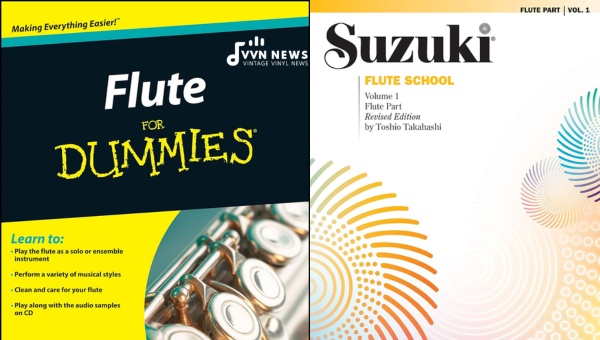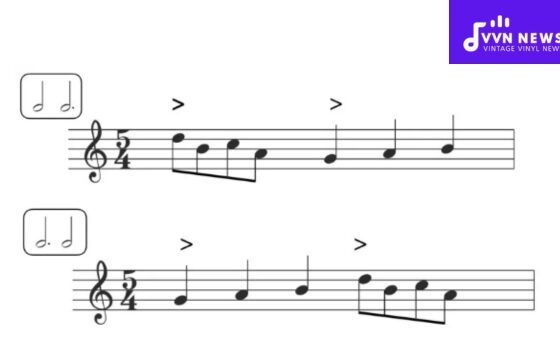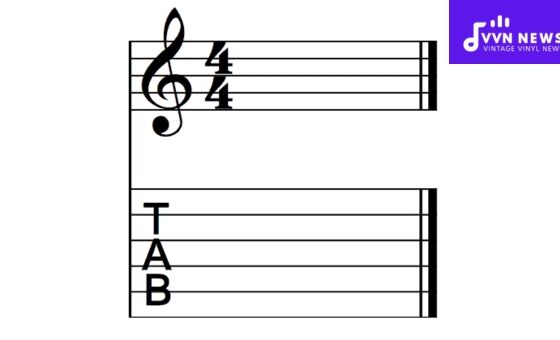Flute playing is an art that requires skill and dedication. If you’re new to the world of flutes, getting hold of the right guidance becomes crucial.
From basics to advanced techniques, everything should be clear for a seamless learning experience. Therefore, I’ve compiled a list of the 11 best beginner flute books.
These beginner flute books are handpicked with careful thought, considering their ability to provide clear instructions and comprehensive content structured perfectly for newbies at flute playing.
Guiding you through your journey from being a beginner to becoming proficient, these books focus on fundamental music concepts, better breath control, articulation, and much more.
11 Best Beginner Flute Books

Learning to play the flute can be an exciting and fulfilling journey.
Whether you’re a young student or an adult looking to pick up a new hobby, finding the right beginner flute books is essential to your success.
In this article, I will introduce you to some of the best flute books that will provide you with comprehensive guidance, easy-to-understand instructions, and fun exercises to help you develop your skills as a flutist.
Beginner’s Book for the Flute – Trevor Wye, 2003
One of the most highly recommended beginner flute books is “Beginner’s Book for the Flute” by Trevor Wye.
This comprehensive guide is a staple in flute education and has been trusted by flutists worldwide.
It offers a well-rounded approach to learning the flute, covering essential techniques, music theory, and exercises.
Written in an accessible style, this book is perfect for beginners who are just starting their flute journey.
It begins with an introduction to the instrument, covering topics such as assembly, posture, and holding the flute correctly.
The book also includes detailed explanations of basic techniques like embouchure formation, breath support, fingerings, articulation, and tone production.
What sets this book apart is its emphasis on developing a strong foundation in music theory.
It provides clear explanations of musical notation and rhythm concepts that are essential for becoming a proficient flutist.
The book also introduces beginner-friendly tunes and exercises to help learners apply their newfound knowledge.
In addition to technique and theory, “Beginner’s Book for the Flute” includes valuable information on how to practice effectively and develop good practice habits.
It offers guidance on warm-up exercises, scales, arpeggios, and studying musical phrasing.
Overall, Trevor Wye’s “Beginner’s Book for the Flute” is a comprehensive resource that covers all aspects of flute playing.
Its clear instructions and progressive approach make it suitable for self-study or as a supplement to lessons with a teacher.
Best Beginning Flute Book for Kids- Larry Newman (2020)
If you’re looking for a beginner flute book specifically designed with kids in mind, “Beginning to Intermediate Flute Method Book for Students and Children of All Ages” by Larry Newman is an excellent choice.
This book is carefully crafted to make learning the flute fun and engaging for young learners.
Larry Newman’s approach focuses on providing a step-by-step progression that ensures students develop a strong foundation in technique and musicality.
The book starts with simple exercises and gradually introduces more challenging concepts as the student progresses.
It includes clear explanations of flute techniques such as embouchure formation, fingerings, tonguing, and breath support.
The book also features a variety of fun exercises, songs, and duets that are designed to keep young learners motivated.
One notable feature of this book is its colorful illustrations, which help younger students visualize concepts more easily.
The book also comes with online audio tracks that guide students through each exercise and song.
These audio tracks provide a valuable opportunity for students to train their ears, develop good intonation skills, and play along with professional recordings.
Larry Newman’s “Beginning to Intermediate Flute Method Book for Students and Children of All Ages” is an ideal introduction to the flute for young players.
It provides a solid technical foundation while keeping the learning process enjoyable.
With its interactive components and engaging approach, this book will inspire children to become passionate flutist.
Rubank Intermediate Method – Flute Or Piccolo
Once you’ve mastered the basics of flute playing, it’s time to take your skills to the next level.
That’s where the “Rubank Intermediate Method – Flute or Piccolo” comes in handy.
Written by Joseph Ettore and Major Herman Vincent Reynolds, this book serves as an excellent bridge between beginner-level materials and more advanced repertoire.
The Rubank Intermediate Method covers a wide range of topics to help intermediate flutists further develop their technique and musicianship.
It offers comprehensive explanations of more nuanced techniques like vibrato, double-tonguing, and extended-range playing.
The book also provides exercises and studies focusing on articulation, tone development, scales, intervals, and advanced fingerings.
One of the standout features of this method book is its expansive collection of solo pieces and etudes.
These pieces are carefully selected to challenge intermediate flutists while allowing them to explore various styles and musical expressions.
The Rubank Intermediate Method also includes duets that can be played with a teacher or fellow flute player, allowing for collaborative learning experiences.
It offers a balanced approach to technical advancement and musicality, helping flutists refine their playing while exploring new musical horizons.
Flute for Dummies – Karen Evans Moratz (2009)
Flute for Dummies by Karen Evans Moratz is an accessible and user-friendly guide for those who are new to the flute or have little prior musical experience.
As part of the popular “For Dummies” series, this book breaks down complex concepts simply and engagingly.
Flute for Dummies covers fundamental aspects of flute playing such as assembly, fingerings, breathing techniques, posture, embouchure formation, tonguing, phrasing, reading sheet music, and interpreting dynamics.
It includes step-by-step instructions with clear illustrations to aid visual learners in the proper technique.
What sets this book apart is its practical approach to learning the flute. Flute for Dummies provides numerous exercises and play-along tracks that allow readers to practice their skills at their own pace.
The included audio tracks further enhance learning by demonstrating how each exercise should sound.
In addition to technique instruction, Flute for Dummies covers important topics like choosing the right instrument and accessories.
It also provides tips on how to improve performance anxiety and maintain a healthy practice routine.
Flute for Dummies is an excellent resource for beginners who want a comprehensive introduction to the instrument.
Its friendly and approachable writing style makes it a great self-teaching tool, but lessons with a teacher can also complement it.
Also Read: How To Clean Your Flute [Keep Your Instrument Shiny & Sounding Great]
Abracadabra Flute: The Way to Learn Through Songs and Tunes, 2001
Abracadabra Flute is a popular flute method book that has been helping beginners learn the instrument since 2001.
Written by Malcolm Pollock, this book takes a song-based approach to learning, making it enjoyable and engaging for students.
The key feature of Abracadabra Flute is its extensive collection of songs and tunes.
Each piece in the book is carefully selected to introduce new techniques and musical elements progressively.
From traditional folk songs to well-known melodies from classical and modern repertoire, the book covers a wide range of musical styles.
One unique aspect of Abracadabra Flute is its interactive approach to learning.
The book comes with a CD that features performances of the included songs.
This allows students to listen and play along with professional musicians, helping develop their sense of rhythm, intonation, and musical expression.
In addition to the song-based approach, Abracadabra Flute also covers essential flute techniques such as embouchure formation, fingerings, breath control, articulation, scales, and more.
The clear and concise explanations provided in the book make these concepts easy for beginners to grasp.
Being part of a larger series called “Abracadabra,” this flute method ensures continuity in learning as students progress to higher levels.
It provides additional resources such as theory books and repertoire collections that complement the educational journey.
Overall, Abracadabra Flute offers a comprehensive and enjoyable learning experience for beginners.
Its emphasis on songs and tunes encourages musicality while providing a solid technical foundation on the flute.
Suzuki Flute School, Vol 1 – Shinichi Suzuki
The Suzuki method, developed by Shinichi Suzuki, is a widely acclaimed teaching approach that has been successful in training young musicians for decades.
The Suzuki Flute School, Vol 1 is the first book in the flute series and provides a structured approach to learning the instrument.
One of the core principles of the Suzuki method is the belief that every child has the potential to become a skilled musician with proper nurturing.
This book focuses on developing a strong foundation in ear training and memorization skills. Students are encouraged to learn by listening to recordings and imitating what they hear.
Suzuki Flute School, Vol 1 includes a variety of pieces specially arranged for beginner flutists.
These pieces are carefully chosen to introduce new techniques gradually and provide opportunities for musical expression.
The book also guides tone production, posture, fingerings, and breath control.
Unlike many traditional methods, Suzuki Flute School places great importance on parental involvement.
Parents are expected to attend lessons with their children and serve as home practice partners.
This collaborative approach ensures continuous support for young students as they progress.
The Suzuki method instills a sense of discipline and perseverance in students while fostering a love for music.
It emphasizes beautiful tone production and expressive playing from an early stage, which is why it has gained widespread popularity among both teachers and parents.
If you’re looking for a method that prioritizes ear training and fosters a love for music from the beginning stages of learning, then Suzuki Flute School, Vol 1 is an excellent choice.
Also Read: How To Upgrade Your Flute? [A Comprehensive Buying Guide]
How to Play the Flute: A Beginner’s Guide to Learning the Flute Basics, Reading Music, and Playing Songs – Jason Randall (2018)
“How to Play the Flute: A Beginner’s Guide to Learning the Flute Basics, Reading Music, and Playing Songs” by Jason Randall is a comprehensive beginner flute book that covers all aspects of learning the instrument.
It is designed to provide step-by-step guidance for absolute beginners.
The book starts by introducing the flute itself – its anatomy, assembly process, and care guidelines.
It then covers essential playing techniques such as posture, proper hand and finger positioning, embouchure formation, breath control, and articulation.
Jason Randall’s book also provides an introduction to music theory specifically tailored for flute players.
It covers reading sheet music, note values and rhythms, key signatures, scales, and basic music terminology.
To put these concepts into practice, “How to Play the Flute” includes a range of songs and exercises that gradually increase in difficulty.
These pieces cover various musical styles such as classical, folk, and popular songs. The inclusion of well-known melodies allows beginners to enjoy playing recognizable tunes right from the start.
Throughout the book, Jason Randall emphasizes the importance of regular practice and offers tips for effective practicing.
He guides on developing techniques through focused exercises and suggests ways to overcome common challenges that beginners may face.
“How to Play the Flute” aims to provide aspiring flutists with a solid foundation in technique, music theory knowledge,
Blocki Flute Method Book 1: Student Book 1 – 2016
If you’re looking for a comprehensive beginner flute method book, the Blocki Flute Method Book 1: Student Book 1 is an excellent choice.
Written by renowned flutist and pedagogue Patricia George, this book is designed to guide beginners through their initial stages of flute playing.
The Blocki Flute Method is known for its systematic and engaging approach to teaching the flute.
Student Book 1 introduces essential concepts and techniques in a clear and structured manner.
It covers topics such as flute assembly, posture, proper hand position, embouchure formation, producing a beautiful tone, fingerings, basic music theory, and rhythm.
In addition to technique instruction, this book includes numerous well-crafted exercises and songs that gradually increase in difficulty.
These exercises are designed to reinforce newly acquired skills while keeping students engaged with enjoyable music-making.
The student also has access to online audio tracks that accompany the exercises and songs, making it easier to grasp the concepts and develop good intonation.
One of the highlights of the Blocki Flute Method is its emphasis on developing proper breath control from the very beginning.
The book provides detailed explanations of breathing techniques, breath support exercises, and articulation exercises that help students achieve a consistent and vibrant sound production.
The Blocki Flute Method Book 1: Student Book 1 also includes a musical repertoire suitable for beginner flutists.
These pieces encourage musical expression while gradually introducing new techniques and expanding the range of notes played.
This method book offers a solid foundation in flute playing. Its step-by-step approach helps students progress at their own pace, building their skills with each chapter.
If you’re seeking a comprehensive beginner method that focuses on fundamental technique and enjoyable music-making experiences, the Blocki Flute Method Book 1: Student Book 1 is an excellent choice.
Also Read: 10 Best Flutes For Beginners [Top Picks To Start Your Journey]
The Young Flute Player: Book 1 – Student – Karen North, 2013
For young flute players, The Young Flute Player: Book 1 by Karen North is a fantastic beginner method book that is engaging and age-appropriate.
This book is specially designed to cater to the learning needs of younger students, providing a solid foundation while keeping them motivated and interested in flute playing.
The Young Flute Player: Book 1 starts with basic concepts such as assembling the flute, creating a good sound, holding the instrument correctly, and producing clear tones.
The author uses fun and engaging exercises with clear illustrations to help younger students these fundamental techniques better.
This method book includes a variety of well-known tunes, songs, and duets that are carefully selected to develop technique and musicality.
The pieces feature various musical styles and genres, allowing young players to explore different musical expressions from the start.
Online audio tracks are available to accompany the exercises and songs for further support during practice.
One of the strengths of this method book is its focus on building ensemble skills at an early stage.
The Young Flute Player: Book 1 includes duets that can be played with a teacher or another flute student, encouraging collaborative learning experiences and enhancing rhythmic awareness.
Karen North’s approach promotes musical development through creative activities such as improvisation and composition.
These activities foster creativity in young minds and provide opportunities for self-expression within a structured framework.
The Young Flute Player: Book 1 is an outstanding resource for young flute players embarking on their musical journey.
Its engaging content, age-appropriate exercises, diverse repertoire selection, and emphasis on creative expression make it an excellent choice for both solo learning or supplemental material in conjunction with lessons.
Blocki Flute Method Supplemental Duet Book 1 – 2014
To further enhance the learning experience and provide opportunities for collaborative playing, the Blocki Flute Method Supplemental Duet Book 1 is an invaluable resource.
This book, written as a companion to the Blocki Flute Method, offers a collection of duets that can be played with a teacher or another flutist.
The duet book is designed to reinforce technique, develop listening skills, and improve ensemble playing.
It introduces new concepts gradually through well-crafted duets that engage both players in a musical dialogue.
The duets are written in various styles and genres, providing students with opportunities to explore different musical expressions while developing their ensemble skills.
The Blocki Flute Method Supplemental Duet Book 1 includes exercises to improve intonation, breathing techniques, rhythm precision, dynamics, and articulation.
Each duet has separate parts for each player and is carefully graded to ensure that students progress at an appropriate pace.
Playing duets not only enhances musical skills but also fosters communication, teamwork, and a sense of shared accomplishment.
It allows students to actively listen to each other while coordinating their playing.
Moreover, the duet format provides an enjoyable and supportive environment for learners in which they can grow musically together.
If you’re using the Blocki Flute Method, incorporating the Supplemental Duet Book 1 into your practice routine will greatly enhance your learning experience.
It provides an excellent opportunity to expand your flute-playing abilities while having fun making music with others.
Also Read: 12 Tips To Improve Your Low Notes On The Flute [Easy Strategies To Learn]
Best Beginning Clarinet Book for Kids – Larry Newman (2020)
When it comes to starting on the clarinet as a young beginner, Larry Newman’s Best Beginning Clarinet Book for Kids is an excellent choice.
This book is specifically tailored for children who are embarking on their clarinet-playing journey.
Larry Newman’s approach ensures that young beginners have a solid foundation while keeping them engaged with fun and interactive content.
This book covers essential topics such as assembling the clarinet, hand position, embouchure formation, breath control, fingerings, and basic music reading skills.
The Best Beginning Clarinet Book for Kids includes a variety of exercises and songs that gradually introduce new concepts while reinforcing previously learned skills.
The book provides clear and concise instructions with accompanying illustrations to help young learners apply the techniques effectively.
One notable feature of this book is its inclusion of online audio tracks.
These audio tracks provide students with the opportunity to play along with professional recordings, develop their sense of rhythm and intonation, and gain confidence in their playing.
Larry Newman’s Best Beginning Clarinet Book for Kids also includes fun activities such as games, trivia quizzes, and puzzles to make learning enjoyable for young beginners.
These activities not only reinforce musical concepts but also playfully engage children.
Also Read: Flute Vs Recorder [Which Instrument Is Best For You?]
FAQs About best beginner flute book
How do I choose the best beginner flute book?
Consider your level of experience, learning style, and goals. Look for books that cover technique, and music theory, and offer engaging exercises and songs.
Can I learn the flute on my own with a beginner flute book?
Yes! A well-designed beginner flute book can provide you with a solid foundation to start learning the flute on your own. However, working with a teacher can help you progress faster and ensure proper technique.
Are there beginner flute books specifically designed for kids?
Yes! There are many beginner flute books tailored to children’s learning needs. Look for colorful illustrations, fun exercises, and age-appropriate content to keep kids engaged.
Are online resources enough, or should I invest in a beginner flute book?
Online resources can be helpful, but investing in a beginner flute book offers structured guidance and ensures comprehensive learning across various topics.
I want to progress beyond the basics. Are there intermediate-level methods available?
Absolutely! Intermediate-level method books like “Rubank Intermediate Method” provide advanced techniques, scales, studies, and repertoire to help you further develop as a flutist.
Conclusion
Choosing the right beginner flute book is essential for anyone starting their flute-playing journey.
If you’re a student or someone pursuing the flute as a hobby, these recommended books will provide structured guidance and help you develop essential techniques and musicality.
From Trevor Wye’s “Beginner’s Book for the Flute” to Larry Newman’s “Beginning to Intermediate Flute Method Book for Students and Children of All Ages,” each book offers a unique approach to learning the flute.
Remember to explore resources like the Rubank Intermediate Method for further advancement, and don’t forget about Flute for Dummies for a user-friendly introduction. Happy fluting!








